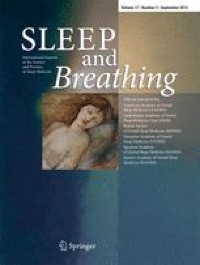|
Anapafseos 5 Agios Nikolaos 72100,Crete,Greece,00302841026182,00306932607174,alsfakia@gmail.com
Blog Archive
- ► 2022 (3010)
-
▼
2021
(9899)
-
▼
April
(838)
-
▼
Apr 04
(100)
- Eruptions of sebaceous adenomas and carcinomas ind...
- Adult-Onset Eccrine Angiomatous Hamartoma: A Case ...
- Good Response to Tofacitinib in Refractory Amyopat...
- Atypical Palmoplantar Pityriasis Rosea
- Hives After Handling Honey
- Comedonic Lupus: An Unusual Presentation of Cutane...
- Surgical Technique for Muscle Biopsy
- RF - Generalized Morphea: Definition and Associations
- A «Cesarean Scar»—With No C-Section!
- Secukinumab: Drug Survival in Clinical Practice Se...
- Tumor arteriovenoso: pistas dermatoscópicas para s...
- Cold-associated perniosis of the thighs (CAPT).
- Painful Nodules on the Thighs
- Dermatologic Conditions of Eminent Historical Figures
- Phototherapy for Prurigo Nodularis: Our Experience...
- Dermoscopy in Basal Cell Carcinoma: An Updated Review
- Cutaneous Manifestations in Patients With COVID-19...
- The Most Useful Pharmaceutical Formulations (Indiv...
- Sonidegib in the Treatment of Locally Advanced Bas...
- alms1 mutant zebrafish do not show hair cell pheno...
- Risk factor analysis of allergic rhinitis in 6–8 y...
- IBCC – Malignant Hyperthermia
- Foreign body aspiration in children: Treatment tim...
- Early surgical intervention enhances recovery of s...
- Development and validation of an automated dichoti...
- Cry features of healthy neonates who passed their ...
- Characteristics and overall survival in pediatric ...
- Prognostic factors for the improvement of pain and...
- Vehicle Odometry with Camera-Lidar-IMU Information...
- The Vicarios Virtual Reality Interface for Remote ...
- Percutaneous operative treatment of fragility frac...
- Rhamnolipids Application for the Removal of Vanadi...
- Carbon-ion radiotherapy subsequent to balloon-occl...
- Comparing ontologies and databases: a critical rev...
- Knowledge-Based Hierarchical POMDPs for Task Planning
- Ultrasonic bone removal from the ossicular chain a...
- Characteristics of pediatric thoracic trauma: in v...
- Genome-Wide Identification and Analysis of Chromos...
- Moheibacter lacus sp. nov., Isolated from Freshwat...
- Inhibition of Cdc20 suppresses the metastasis in t...
- Automated image splicing detection using deep CNN-...
- Effects of Co-Applications of Biochar and Solid Di...
- A Review of Robotic and OCT-Aided Systems for Vitr...
- The role of 2-hydroxyglutarate magnetic resonance ...
- Serum concentrations of dihydrotestosterone are as...
- Exosomal miR-21-5p contributes to ovarian cancer p...
- Long-term Emergency Department Visits and Readmiss...
- Incidence and OR team awareness of “near-miss” and...
- Association of adherence to the Mediterranean diet...
- Evaluation of cardiac function and systolic dyssyn...
- Prevalence of hydroxychloroquine retinopathy with ...
- Targeted high concentration botulinum toxin A inje...
- Multiple system inflammatory syndrome associated w...
- Lung cancer mimicking systemic lupus erythematosus...
- Increased influenza vaccination rates in patients ...
- Knowledge gap about immune checkpoint inhibitors a...
- A retrospective comparison of respiratory events w...
- Primary central nervous system lymphoma in neurops...
- Antibody subtypes and titers predict clinical outc...
- The association of Candida and antifungal therapy ...
- Distinct phylogeographic patterns in populations o...
- Risk and clinical outcomes of COVID-19 in patients...
- Sneddon syndrome: under diagnosed disease, complex...
- Prevalence of hydroxychloroquine retinopathy with ...
- Targeted high concentration botulinum toxin A inje...
- Multiple system inflammatory syndrome associated w...
- Lung cancer mimicking systemic lupus erythematosus...
- Increased influenza vaccination rates in patients ...
- Knowledge gap about immune checkpoint inhibitors a...
- The global prevalence of rheumatoid arthritis: a m...
- A retrospective comparison of respiratory events w...
- Plasmacytoid dendritic cells and type I interferon...
- Increased risk of mental health disorders in patie...
- Primary central nervous system lymphoma in neurops...
- Cross-cultural adaptation and psychometric testing...
- Patient perspectives on how to improve education o...
- Use of conventional synthetic and biologic disease...
- Antibody subtypes and titers predict clinical outc...
- Therapeutic approaches to pediatric COVID-19: an o...
- Disease recurrence after colorectal cancer surgery...
- Asymptomatic vs Symptomatic Primary Hyperparathyro...
- Short-term results of the combined application of ...
- Comparison of the efficacy and safety of anti-VEGF...
- Does Familial Mediterranean Fever Provoke Atherosc...
- High Acuity Therapy Variation Across Pediatric Acu...
- Heel fat pad involvement in rheumatoid arthritis: ...
- Periodontal disease and risk of mortality and kidn...
- Mucins reprogram stemness, metabolism and promote ...
- Molten salt derived crystalline graphitic carbon n...
- Local application reduces number of needed EPC for...
- Unusual cause of hypoxia due to incomplete removal...
- Comparison of Liver Recovery After Sleeve Gastrect...
- Establishment and characterization of 38 novel pat...
- Geriatric assessment and medical preoperative scre...
- A Stakeholder-Engaged Process for Adapting an Evid...
- MiR-193a-3p Promotes Fracture Healing via Targetin...
- Right-sided Zenker’s diverticulum resected using i...
- No evidence for an effect of working from home on ...
- Catheter Ablation of Atrial Fibrillation in Heart ...
- The comparison of STA-MCA bypass and BMT for sympt...
-
▼
Apr 04
(100)
-
▼
April
(838)
- ► 2020 (4138)
- ► 2019 (2429)
Αλέξανδρος Γ. Σφακιανάκης
Sunday, April 4, 2021
Association of adherence to the Mediterranean diet and physical activity habits with the presence of insomnia in patients with obstructive sleep apnea
Subscribe to:
Post Comments (Atom)



No comments:
Post a Comment